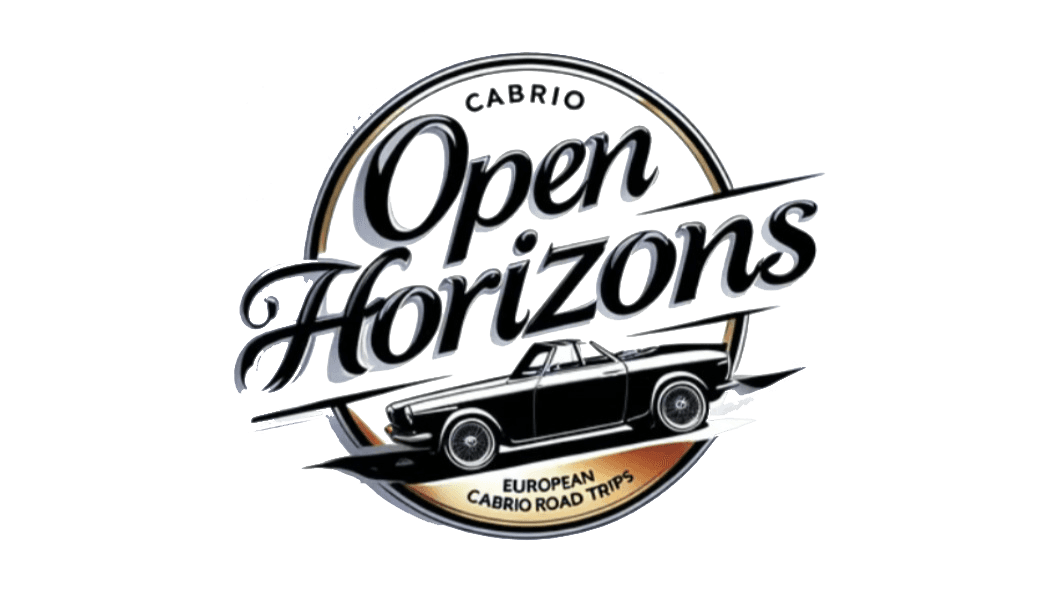Open above through Alsace
The Alsace is a region made for a convertible tour. Gentle vineyards, winding Vosges passes, idyllic half-timbered villages, and vibrant towns alternate, offering an unparalleled mix of nature, culture, and driving pleasure. Driving in a convertible means experiencing the landscape, the scent of the vines, and the wind in your hair in an intense way – you feel every curve, every hill, and every view directly. The tour starts in Haguenau and goes through Strasbourg, Obernai, Ribeauvillé, Riquewihr, Colmar, Mulhouse, Gérardmer, and Saarburg, ending back in Haguenau. A circular route that compactly showcases the diversity of the region, making each stop a memorable experience.
A circular route full of variety
The route can ideally be divided into three large stages. Each stage represents a specific part of Alsace, combining landscape, culture, and driving fun. From the northern plain with Strasbourg to the famous wine route and the Vosges in the south, you experience every facet of the region on this convertible tour. Driving in a convertible or roadster means not just driving but feeling the places, landscapes, and panoramas directly. Each curve, viewpoint, and stop contributes to making this tour a true convertible road trip.
First stage: From Haguenau via Strasbourg to Obernai
The starting point of the tour is in Haguenau, a charming small town with a historic marketplace, half-timbered houses, and a vibrant town center. The town is an ideal starting point for the convertible tour, as it embodies the typical elements of northern Alsace: gentle fields, small forests, and idyllic villages. With the roof down and the scent of spring and grapevines accompanying you, you begin your journey towards Strasbourg.
Strasbourg is a city full of contrasts: a historic old town, an impressive cathedral, the canals of “La Petite France,” and modern urban lifestyle. Driving in a convertible here means experiencing the city while maintaining the flexibility to head out into the countryside at any time. After the urban experience, the route continues through gentle hills and the first vineyards until you reach Obernai. This medieval town impresses with its half-timbered houses, winding streets, and inviting marketplace. It's worth taking a longer break here to enjoy the atmosphere of Alsace in peace and consciously end the first stage.
Second stage: From Obernai via Ribeauvillé and Riquewihr to Colmar
The second stage is the heart section of the wine route that has made Alsace world-famous. From Obernai, the route leads through picturesque wine towns like Ribeauvillé, which impresses with its castle ruins, colorful half-timbered houses, and lively streets. Driving in a convertible here means fully enjoying the varied roads, the gentle hills, and the panoramas. Small viewpoints invite spontaneous stops where you can take in the landscape.
Next, you continue to Riquewihr, a village regarded as one of the most beautiful in France. The medieval city wall, the narrow streets, and the colorful houses create a fairytale backdrop. Driving with the roof down here is particularly enticing, as the curvy roads and picturesque surroundings evoke a sense of freedom and driving pleasure.
The destination of this stage is Colmar, one of the most attractive cities in Alsace. Canals, the charming “Little Venice,” and the colorful houses make the city look like it’s straight out of a storybook. Here, you should definitely plan for a longer stay to explore the city on foot. While it's possible to drive through Colmar in a convertible, the beauty of the old town is best appreciated by strolling through the streets, along the small canals and squares.
Third stage: From Colmar via Mulhouse, Gérardmer, and Saarburg back to Haguenau
The third stage leads south into the Vosges, the heart of Alsace's nature. From Colmar, you initially head to Mulhouse. The road meanders through fields, small forests, and gentle hills, offering views of the foothills of the Vosges along the way. Mulhouse surprises with technical museums like the automobile and railway museum – an ideal stop to combine culture and technology on a convertible trip.
From Mulhouse, the route continues into the Vosges to Gérardmer. Winding roads, dense forests, and clear mountain lakes accompany you on this section. Driving in a convertible enhances the feeling of freedom, as each curve reveals new panoramas and the opportunity to make spontaneous detours to the lake or viewpoint.
Next, you head through southern Alsace to Saarburg. On the way there, open fields, small villages, and forests alternate. Saarburg itself is an idyllic place showcasing the typical architecture of Alsace: half-timbered houses, historic squares, and a peaceful ambiance. Here, one more break is welcome before heading back to Haguenau over gentle hills and vineyards. This final stage rounds off the circular route and reflects the entire diversity of Alsace – from vineyards, villages, and towns to the Vosges.
Tips for the convertible tour through Alsace
Plan enough time for breaks in the towns along the route – half-timbered houses, squares, and small cafés invite you to linger. It can also get chilly in the Vosges passes even in summer, so appropriate clothing is recommended. Culinary highlights include tarte flambée, sauerkraut, Munster cheese, and Alsatian wines. The most beautiful panoramas are often reached via small detours off the main roads. The wine towns along the wine route also offer short, charming diversions to enhance the experience.
Conclusion: Freedom, driving pleasure, and culture
“With the roof down through Alsace” is a convertible tour that showcases nature, culture, and driving pleasure in perfect combination. From Haguenau through Strasbourg, Obernai, Ribeauvillé, Riquewihr, Colmar, Mulhouse, Gérardmer, and Saarburg back to Haguenau, you experience the entire diversity of Alsace. Driving in a convertible means intensely savoring each stage, feeling the landscapes, cities, and panoramas up close, all while experiencing the incomparable feeling of freedom on the winding roads.

